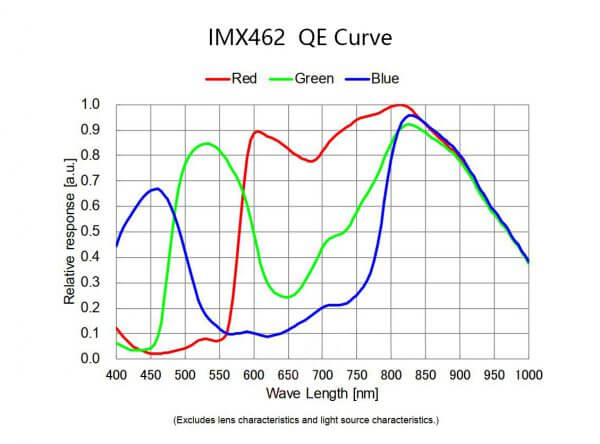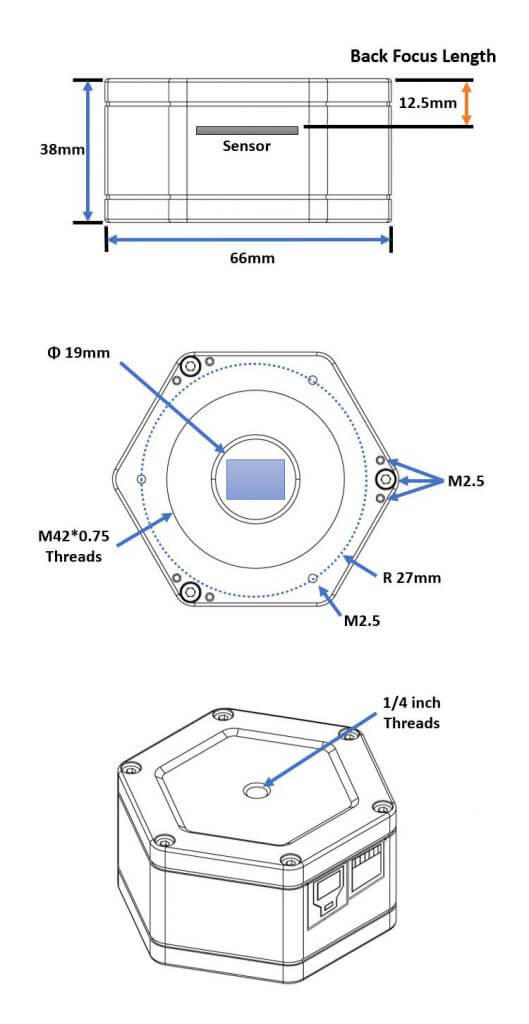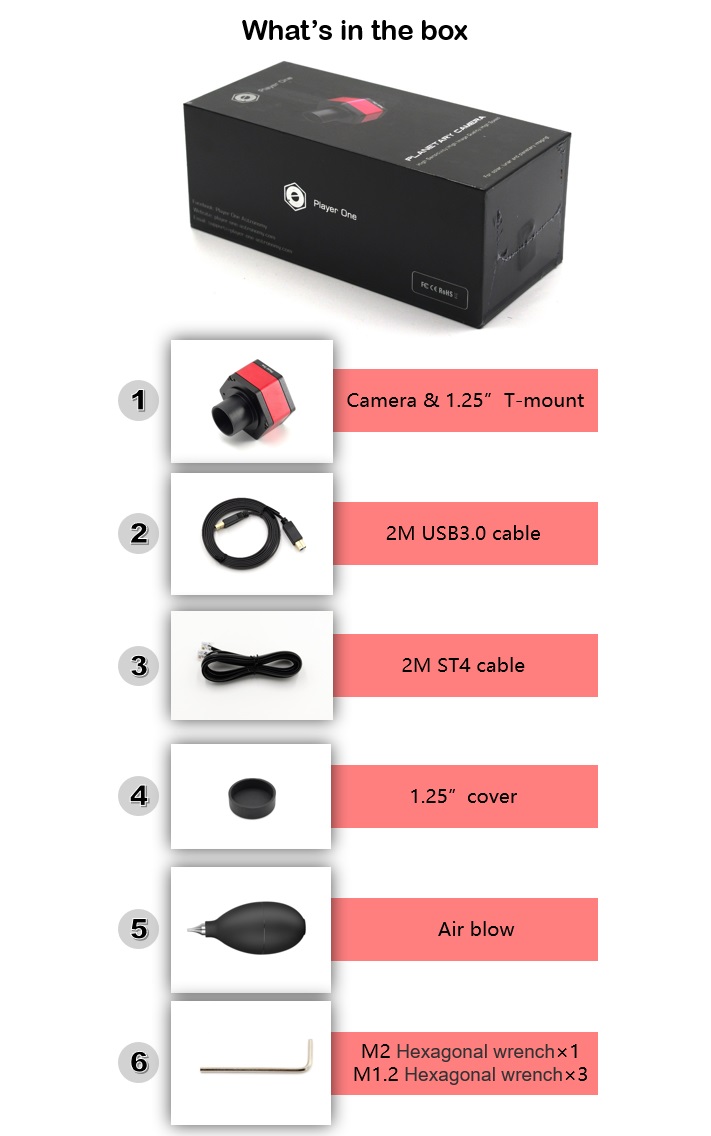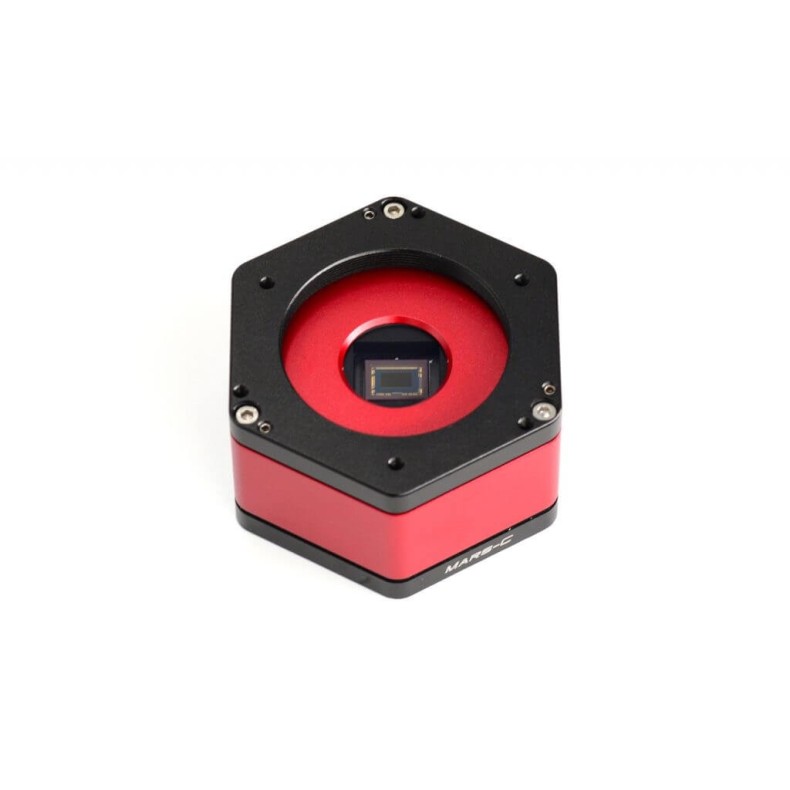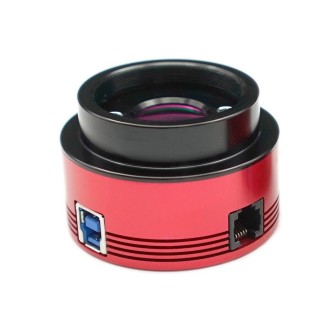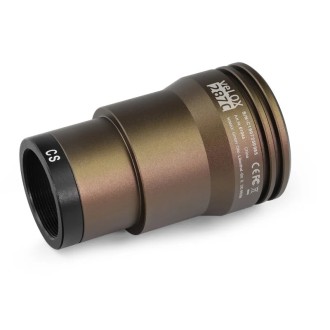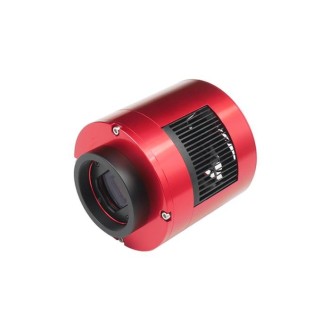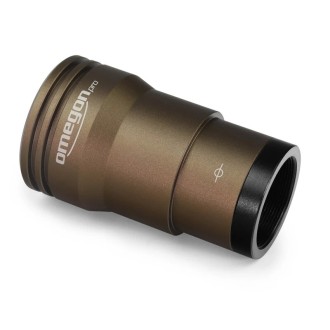Deliver it 18/28 days

Player One Mars-C USB 3.0 (IMX462) Player One Mars-C Color Camera
Mars-C is a planetary camera developed by Player One Astronomy, which adopts the 1/2.8" format Sony IMX462 sensor. The pixel size of 2.9um allows a 12ke well depth with a total of 2.1MP (resolution is 1944*1096), and the diagonal is 6.46mm.
| Carrier | Description | Estimated Delivery | ||
|---|---|---|---|---|
 |
Home delivery - International | Home delivery - International |
Tuesday, 28 May - Friday, 7 June |
|

Home delivery - International
Home delivery - International
Estimated delivery:
Tuesday, 28 May - Friday, 7 June
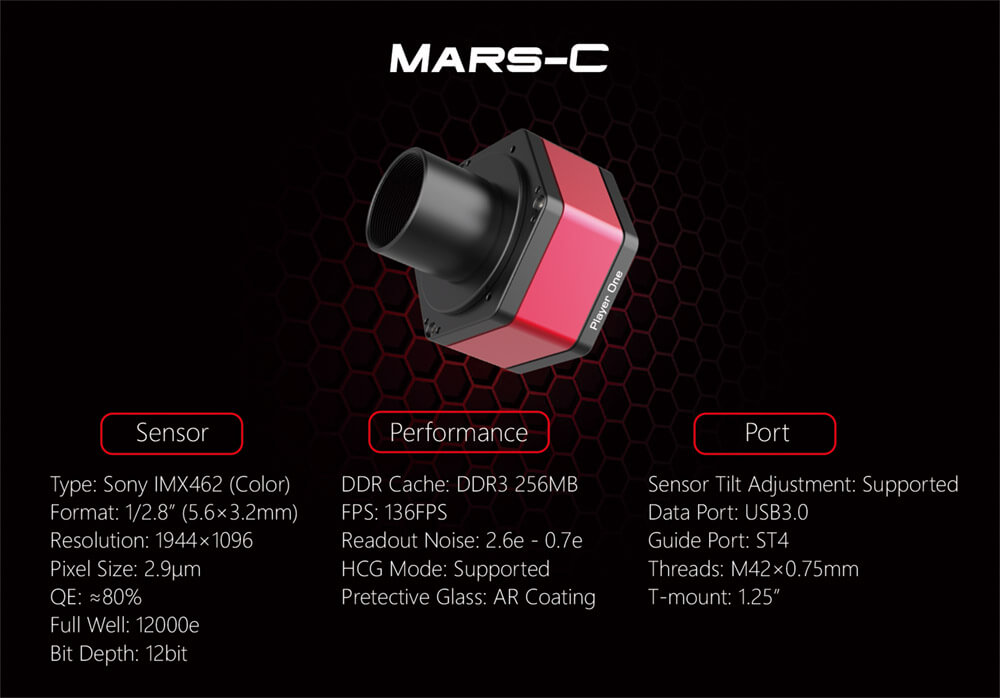
The nomenclature of the chambers Player One Astronomy is unique. For example, we call the planetary cameras as planets (Mercury, Venus, Mars, Jupiter, Saturn, Uranus and Neptune, Earth is not included). The size of each planet represents to some extent the size of the camera sensors. Saturn will be named with a 1-inch sensor camera, and Mars will be named with a ½.8-inch sensor camera. All names will be engraved on the housing of the cameras.
Mars-C planetary camera highlights
Mars-C has super-high sensitivity and ultra-low read noise. All these features provide users with excellent performance for planetary imaging, such as Mars, Jupiter, Saturn, as well as solar and lunar imaging.
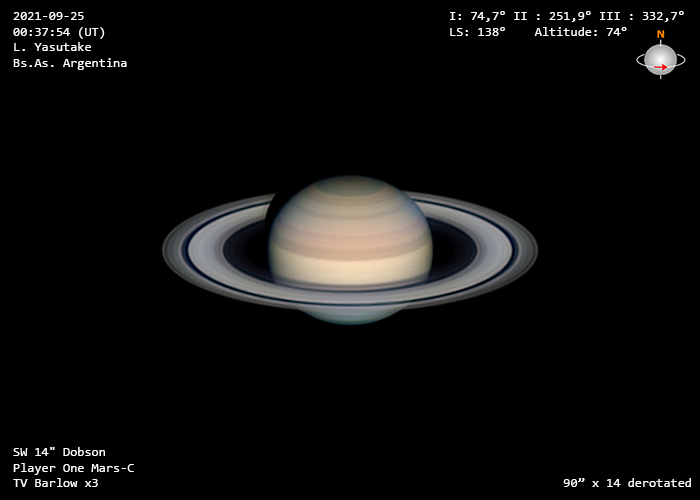
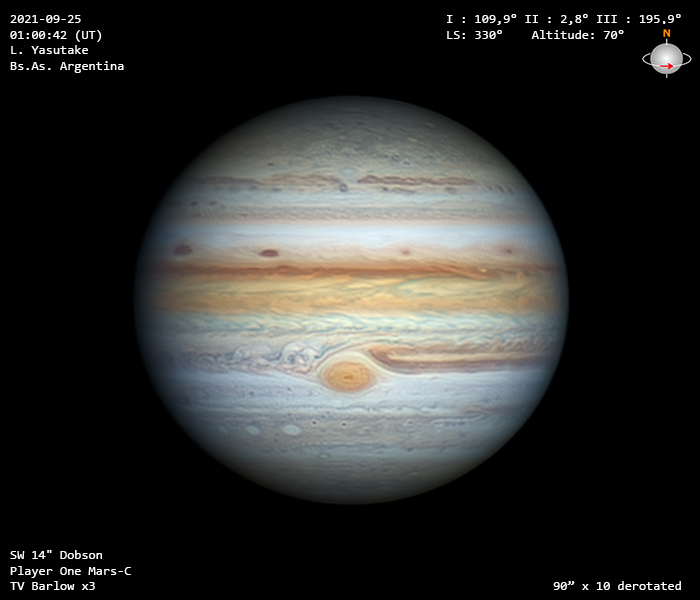
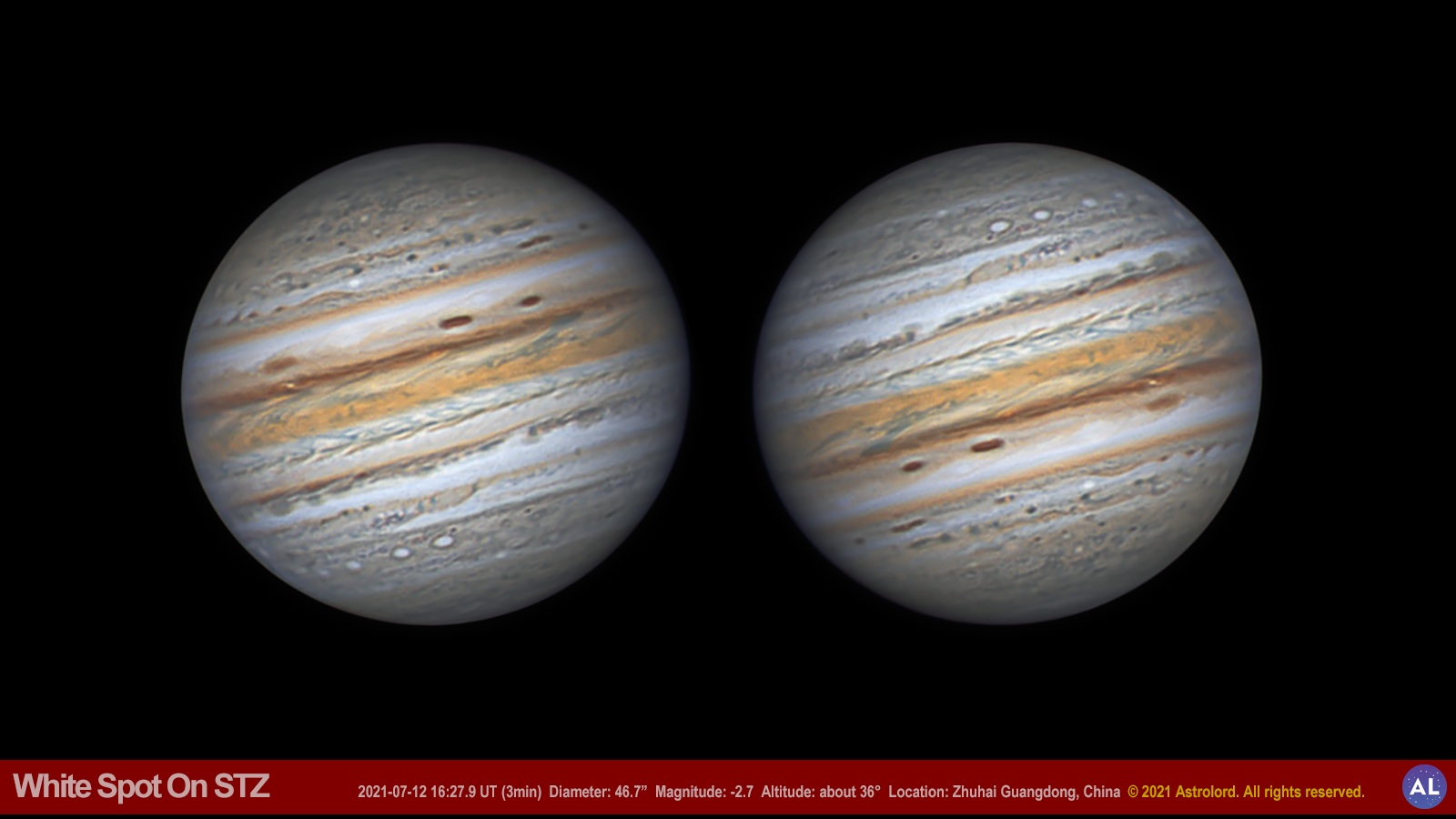
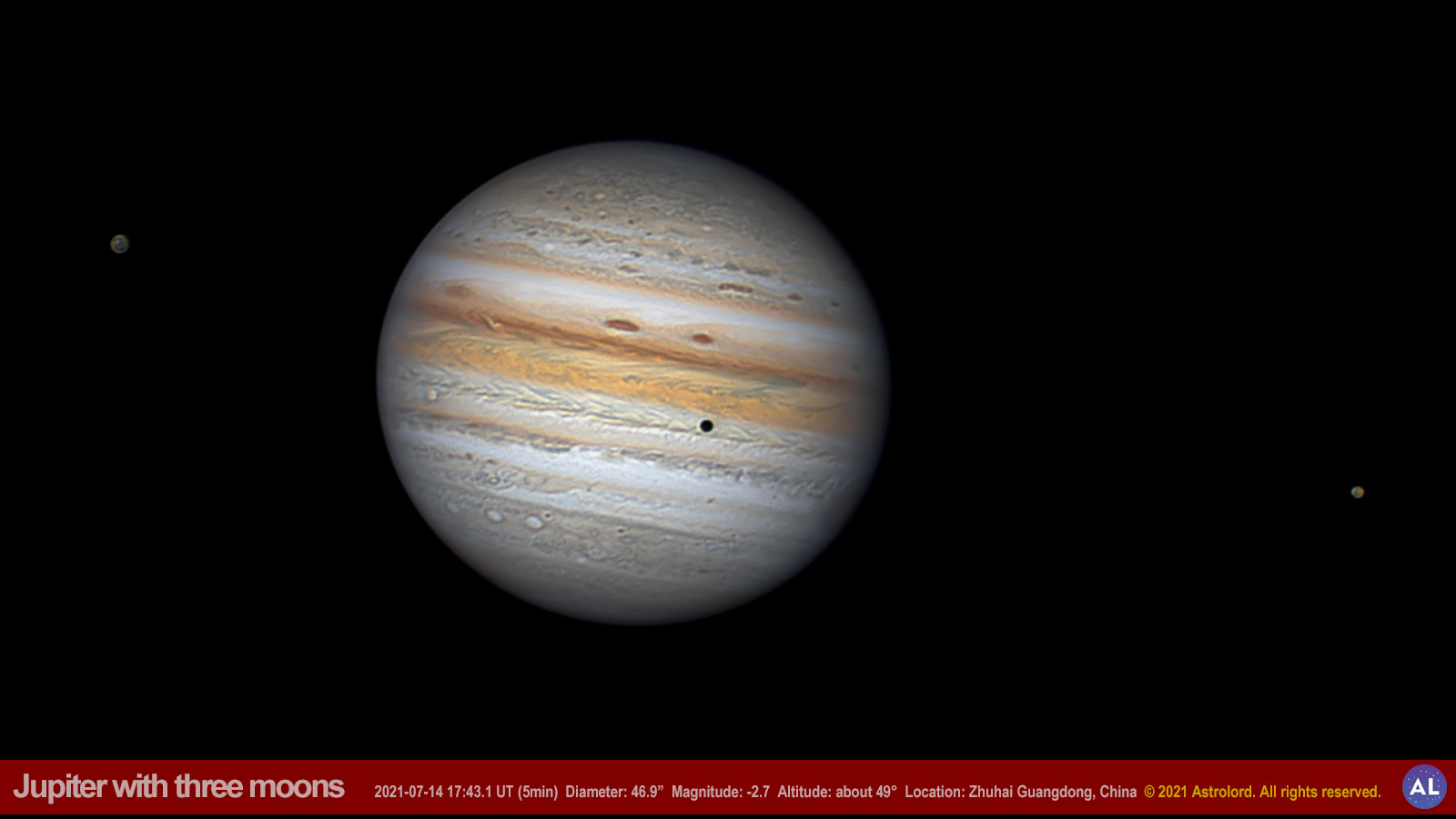
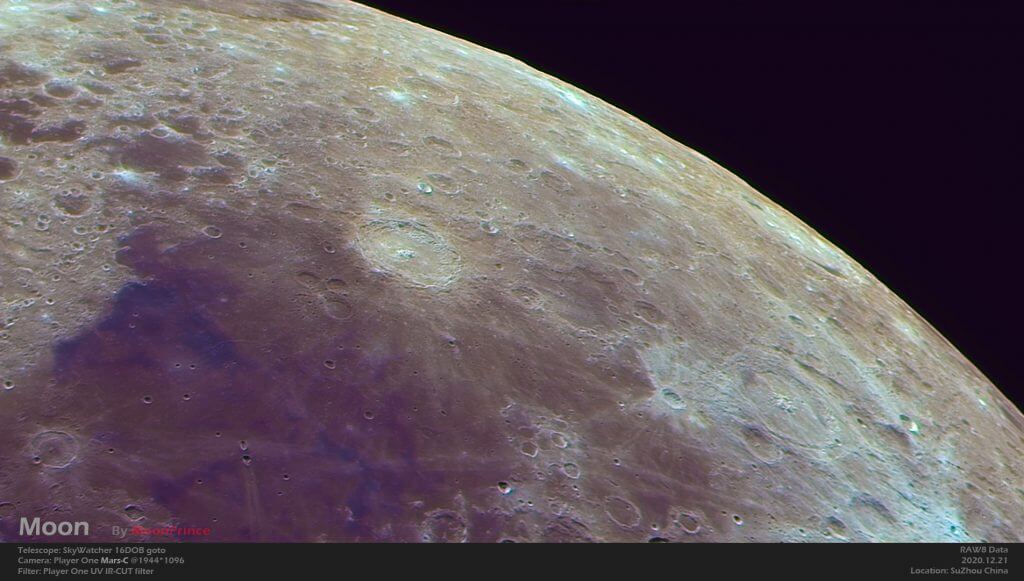
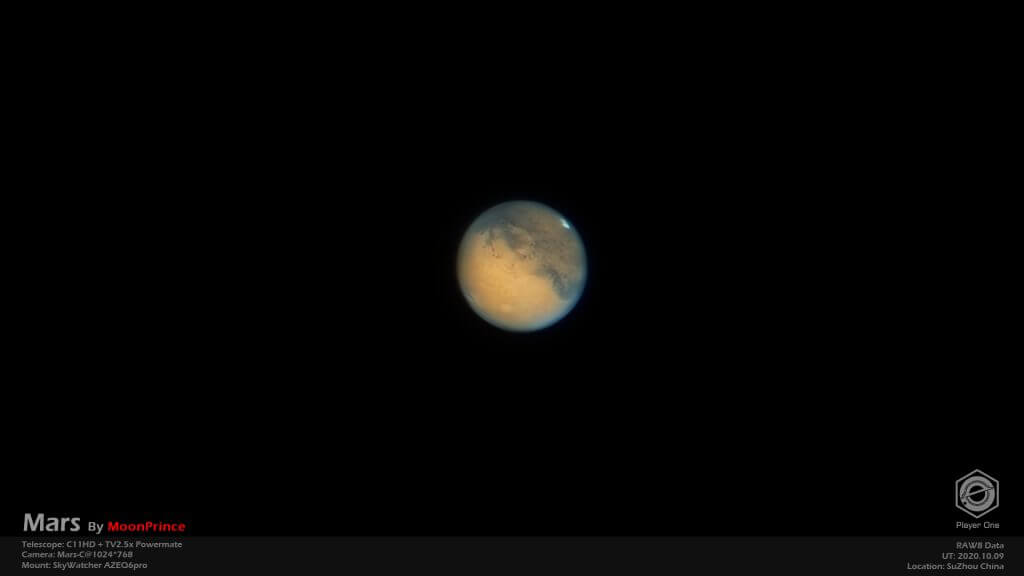
What's even more fun is that, thanks to its high infrared imaging capability and extremely high sensitivity, the Mars-C camera can be used as a monochrome camera with an IR850 filter or a CH4 filter for infrared imaging.
By attaching the Mars-C camera to a telescope with a 1.25″ T-mount, or by adding a Barlow lens between the camera and a telescope to extend the focal length for more detail.
With a CS lens attached to the Mars-C camera, it can be used as an all-day camera or meteor tracking camera.
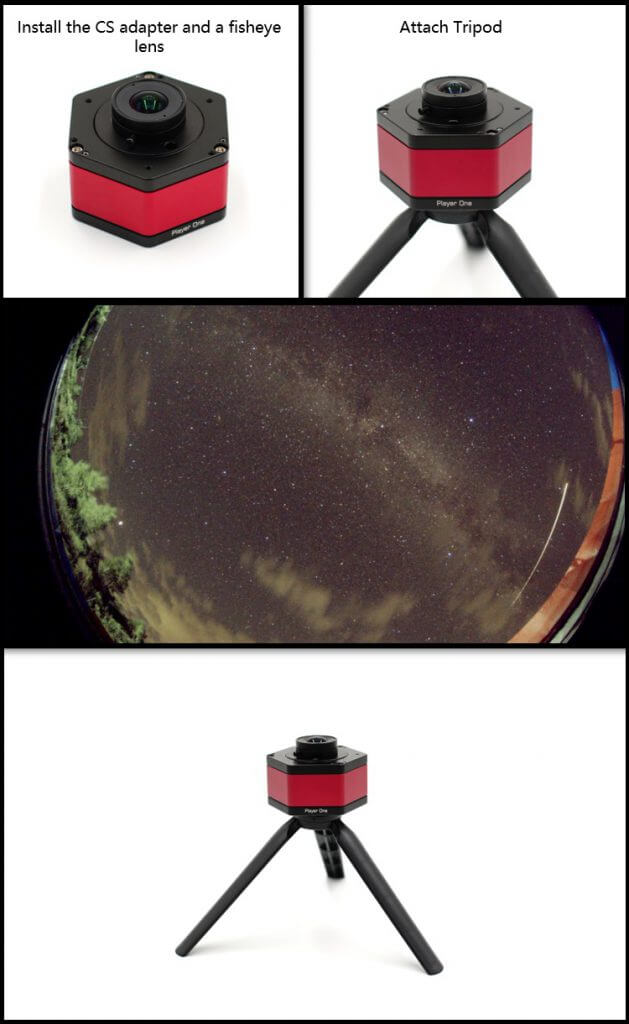
Cutting-edge design
Planetary cameras developed by Player One Astronomy use a regular scientific and technological hexagon to construct the main body line, complemented by round chamfers for both rigidity and flexibility. The positive red, which is like a summer fire, is paired with the low-profile and stable black, and the superfine glazing process on the entire surface makes the camera look luxurious and cool, highlighting the style of high-end players, I can't take my eyes away.
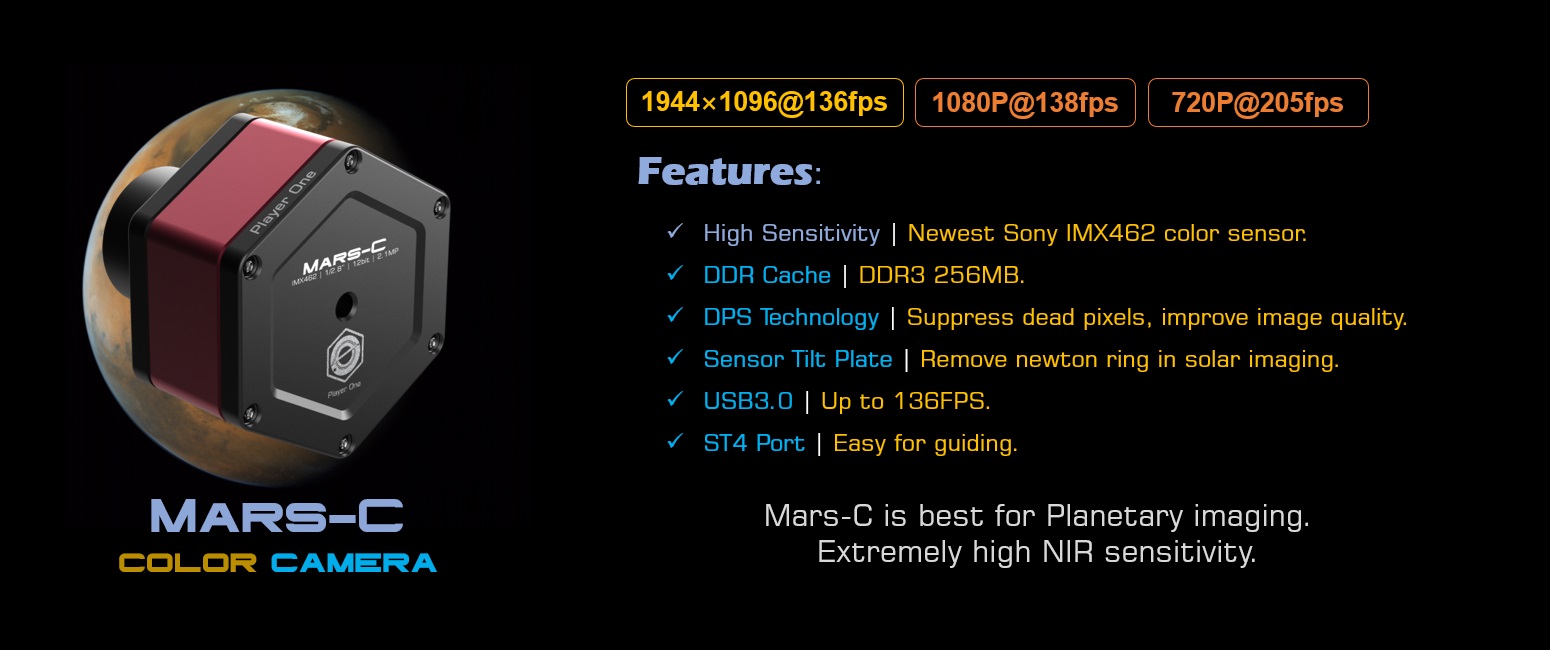
2nd Gen - Sensor tilt plate
Built-in high density sponge shading pad can block the light from the side slits without any side leakage.
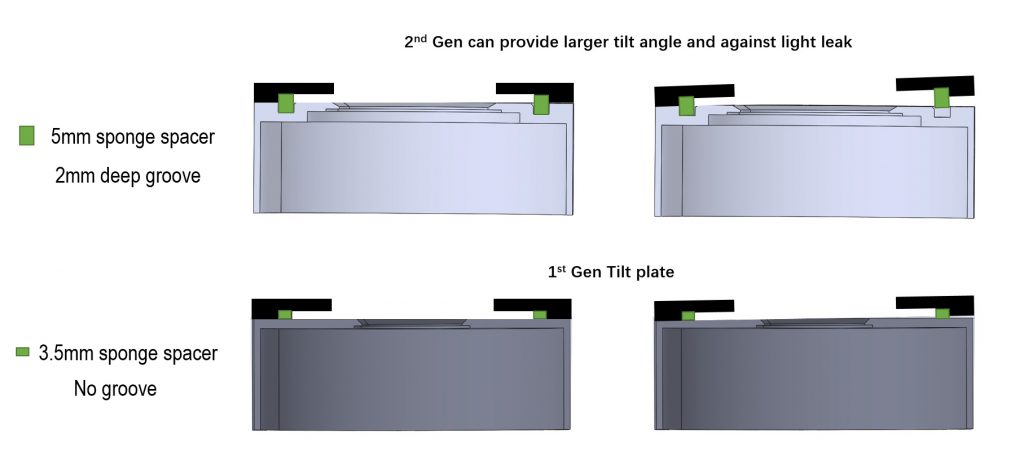
When taking solar photography with prominence telescope, the Newton ring is annoying. A smoother solar image can be taken without Newton ring by adjusting the focal plate. Achieve much smaller telescope field curvature.
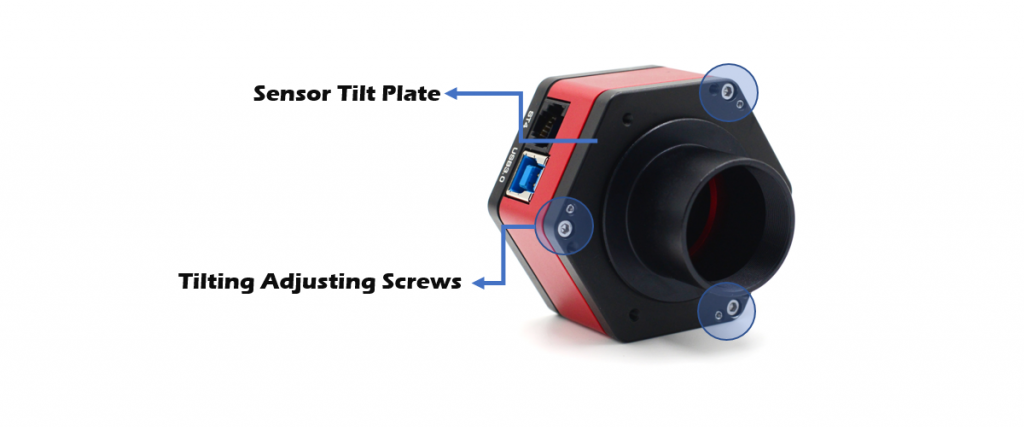
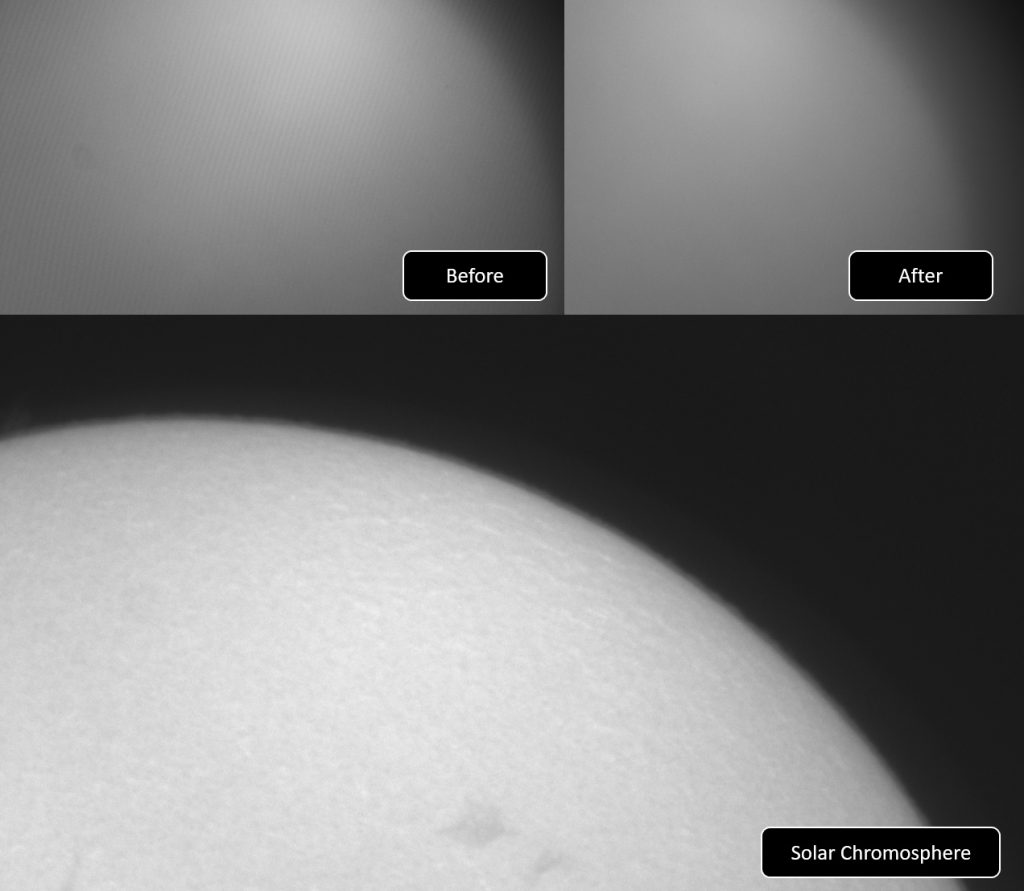
256M DDR3 Cache
Player One Astronomy cameras are the first to adopt DDR3 cache in all planetary cameras worldwide. It helps stabilize and secure data transmission, effectively prevents frame dropping and greatly reduces read noise.
With DDR3 cache, the Mars-C camera no longer has high demands on computing needs, it will still have excellent performance even when connected to a USB 2.0 port.
DPS technology
The planetary cameras from Player One Astronomy feature DPS (Dead Pixel Suppression) technology. DPS analyzes many dark frames to find the abnormal fixed pixels and record the map in the camera's memory. In each exposure frame, the position of the dead pixels will receive an average value depending on the active pixels around that abnormal pixel.
![]()
Over-voltage and over-current protection mechanism
Player One cameras produced by number one ensure the safety of your camera and other equipment through over-voltage and over-current protection mechanisms.
Data port
When the camera is connected to the USB3.0 interface and a full resolution preview is used, it can achieve 136 FPS in RAW8 (10bit ADC) mode, and the frame rate in RAW16 (12bit ADC) mode is 64 frames per second. When recording images, since the actual writing speed will be affected by the writing speed of the hard disk itself, when the writing speed of the hard disk is slow, the recording may not reach the theoretical speed. It is recommended to use a high quality solid state drive for recording data to take full advantage of the camera's performance.
Use the ST4 guide cable to connect the camera and the AUTO GUIDE port on the equatorial mount for guiding.
Readout noise
As for the readout noise, we solemnly promise that all values are obtained from real tests. And for users, you can use Sharpcap 4 for testing. SC4 has a feature called Sensor Analysis, which provides a very simple way to test read noise.
We have written a tutorial on our website: https://player-one-astronomy.com/service/manuals/
After many rigorous read noise tests, the Mars-C camera can achieve a low read noise of 0.73e with a gain of 350 and around 0.7e with a gain of 400.
If you are interested in performing read noise testing, you can try it yourself, which is very simple.
HCG mode
The Mars-C camera has a unique HCG mode, which will be automatically activated when the camera gain setting is ≥80. The HCG mode can greatly reduce the read noise and maintain the same high dynamic range as the low gain.
QE curve
The QE curve of the Mars-C camera is unique. The sensitivity peaks at 800-850nm, and meets the RGB, which has very strong infrared sensitivity.
